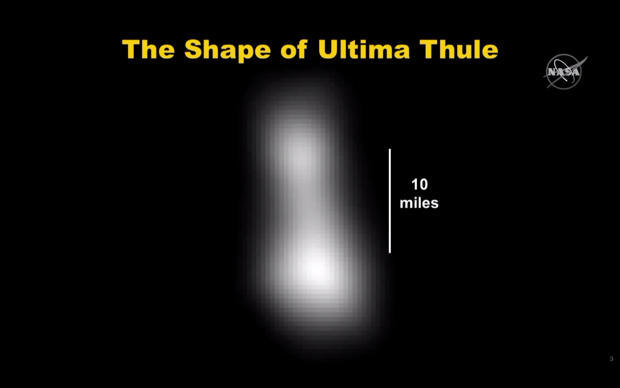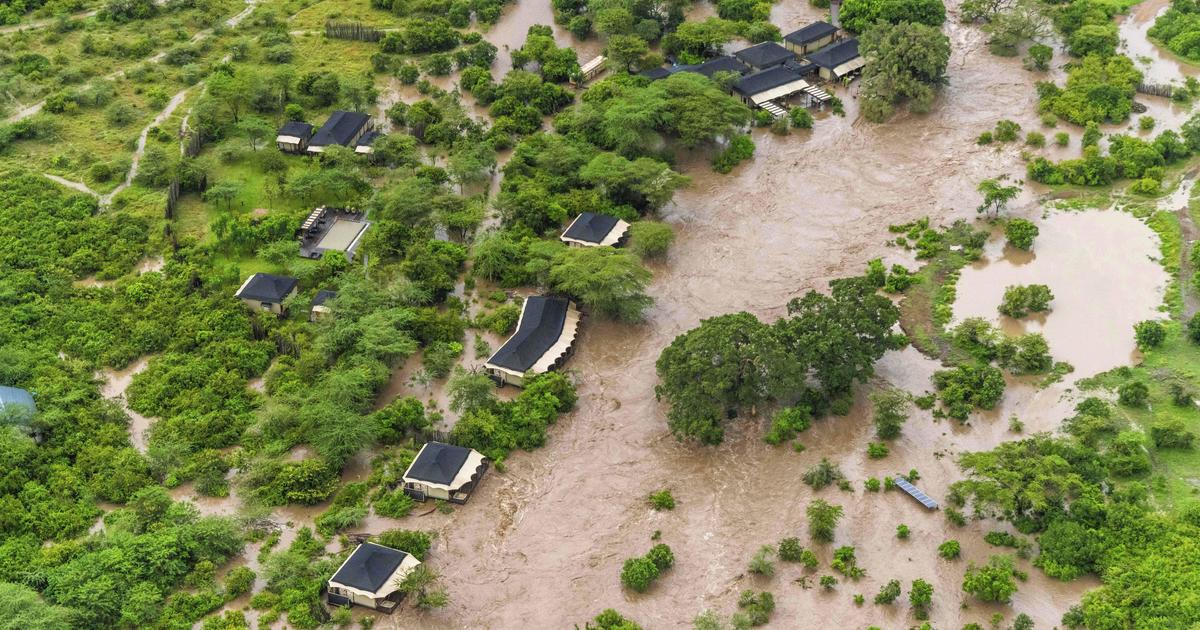NASA's New Horizons spacecraft survives historic trip to world one billion miles beyond Pluto
NASA's New Horizons spacecraft raced past a frozen remnant of the solar system's birth early New Year's Day, phoned home to confirm a successful flyby and began beaming a treasure trove of pictures and other data to eager scientists waiting back on Earth some 4.1 billion miles away.
"Last night, the United States spacecraft New Horizons conducted the farthest exploration in the history of humankind, and did so spectacularly," said Alan Stern, the principal investigator. "Thousands of operations on board the spacecraft had to work correctly in order for us to be able to tell you this, and now we know that it all did."
The nuclear-powered New Horizons passed within 2,191.6 miles of its target, a bowling pin-shaped 22-mile-long body known as Ultima Thule, at 12:33 a.m. EST (GMT-5), streaking by at 32,212 mph, 14 times faster than the bullet from an assault rifle.
New Horizons carried out the flyby in radio silence, aiming its instruments at Ultima Thule and its surroundings as the probe's flight computer methodically worked through a complex science timeline intended to maximize the return from its suite of cameras, spectrometers and other instruments.
Back at Johns Hopkins University's Applied Physics Laboratory near Baltimore, anxious scientists and engineers could only wait and wonder, celebrating New Year's Eve with a program of planetary science discussions and enthusiastic countdowns to mark the new year and, 33 minutes later, the moment of Ultima Thule's flyby.
Brian May, lead guitarist for the legendary rock band Queen who also holds a Ph.D. in astrophysics, wowed the revelers, sporting party hats and sipping champagne, with a new music video praising the New Horizons mission.
It was a welcome diversion because in the end, all they could do was wait and keep their fingers crossed while New Horizons, far beyond any human oversight or assistance, worked through its timeline.
At the spacecraft's enormous distance from Earth, radio signals need six hours and eight minutes to cross the 4.1-billion-mile gulf. And the phone-home health check could not begin until the highest priority observations were complete.
Finally, a few hours after the flyby, New Horizons turned to point its fixed antenna at Earth and radioed a brief status report back to APL. The signal came in at 10:31 a.m., and one controller after another reported "nominal" operations. Telemetry showing the spacecraft's solid state recorders were loaded with the expected amount of data prompted cheers and applause.
"We have a healthy spacecraft," announced mission operations manager Alice Bowman, known affectionately as MOM. "We've just accomplished the most distant flyby (ever attempted). We are ready for Ultima Thule science transmission."
In a post-flyby news briefing a half hour later, Stern began by saying "I don't know about all of you, but I'm really liking this 2019 thing so far."
At that moment, the first set of high-priority close-in images already were on their way back to Earth and Stern said initial high-resolution views would be unveiled during a briefing Wednesday.
Because of its small size, Ultima Thule was little more than a faint speck of light until Sunday, when New Horizons' most powerful camera finally began to resolve its shape in a highly blurred, or pixelated, form.
Another pre-flyby picture captured Monday at a distance of about a half-million miles was released Tuesday after confirmation of the successful flyby.
It was still blurry, but Ultima's elongated shape was much more pronounced, measuring about 22 miles long and nine miles wide. Scientists expected to find out overnight whether it's a single body with distinct lobes or two bodies in close orbit.
"My bet would be it's probably a single object, it's bilobate, and if I'm wrong I'll tell you tomorrow," Stern said. "If it's two separate objects, this would be an unprecedented situation in terms of how close they're orbiting to one another. It would be spectacular to see, and I'd love to see it, but I think the higher probability is it's a single body."
Much sharper pictures, expected to exceed the clarity of New Horizons' best shots of Pluto during its historic 2015 flyby, were expected Wednesday and Thursday with even higher resolution shots later.
Discovered by the Hubble Space Telescope in 2014, Ultima Thule is one of countless denizens of the remote Kuiper Belt, a vast zone of debris beyond the orbit of Neptune made up of rocky fragments left over from the original disk of material that coalesced to form the solar system some 4.6 billion years ago.
The small body is known as a "cold classical" Kuiper Belt object, or KBO, meaning it is a pristine sample of that original material, circling the sun in a circular, flat orbit that indicates it has not been jostled or otherwise disturbed since the solar system's birth.
That made it a high-priority target for the New Horizons science team, one close enough for the spacecraft to reach following the Pluto flyby.
"There are really two attributes of Ultima Thule that make it so scientifically valuable to us," said Alan Stern, the mission's principal investigator. "First, because it's so far from the sun, temperatures are down near absolute zero. As a result of that, chemical reactions are essentially frozen. The object is in such a deep freeze that it's perfectly preserved from its original formation."
And because it is a relatively small body, just 19 miles or so across, "it can't have a strong geologic engine," Stern said.
"Everything we're going to learn about Ultima, from its composition to its geology to how it was originally assembled, whether it has satellite or an atmosphere, those kinds of things, are going to teach us about the original formation conditions of objects in the solar system."
Other bodies -- planets, asteroids, comets -- "can't tell us because they're either large and they've evolved or they're warm and they've evolved for that reason," Stern said. "Ultima is completely unique."
The flyby happened in the blink of an eye, but it will take some 20 months for New Horizons to beam back its treasure trove of data from the extreme outer solar system.
Thanks to its mind-boggling distance, the power of its 15-watt transmitter and other demands on the Deep Space Network antennas needed to capture the faint signals, the final bits of data from the Ultima Thule flyby will not get back to Earth until the Fall of 2020.





